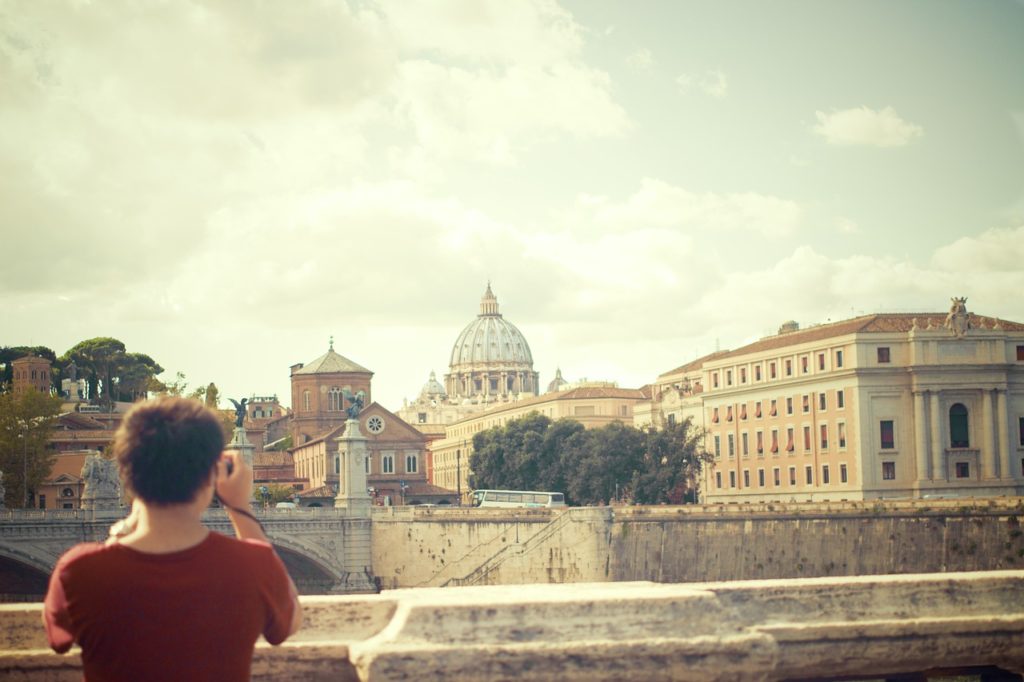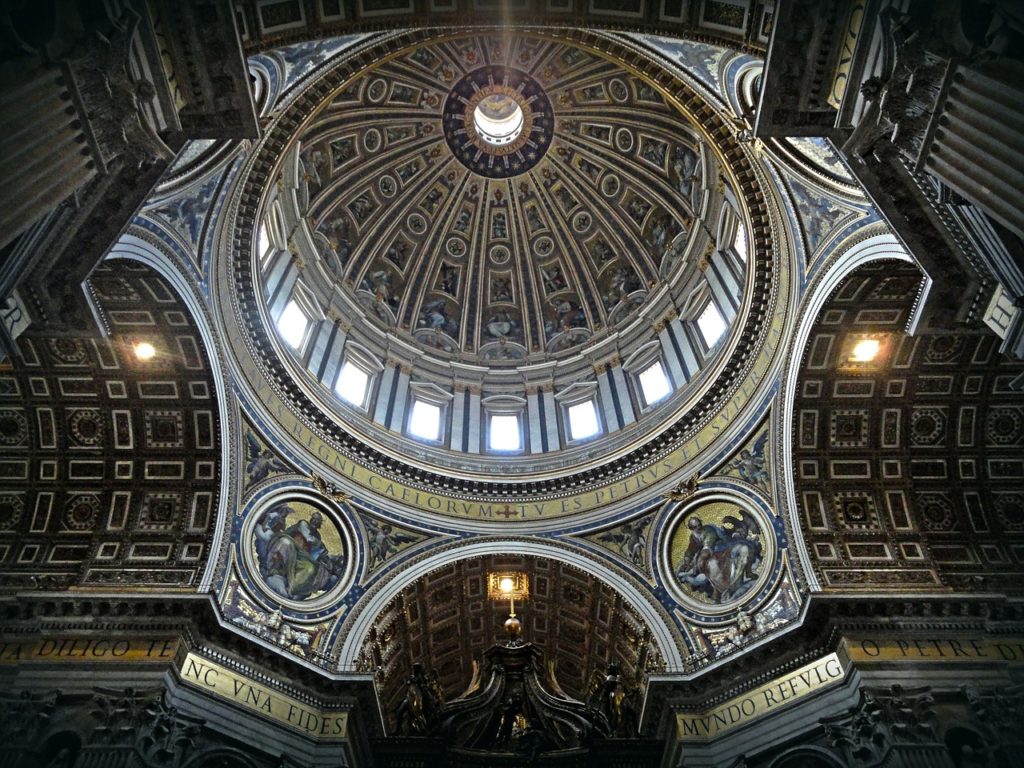History of the Vatican
by Ailsa Harvey · 06/05/2020
Nestled inside Rome, the bustling Italian capital, this tiny city-state has remained the centre of the Catholic world for centuries

(Image source: Pixabay)
Vatican City is the spiritual and physical centre of Catholicism and the residence of the religion’s head, the Pope. With a tiny population of 800 people, and guarded by the world’s smallest army, the city nonetheless welcomes some 5 million visitors a year, including devout pilgrims and curious tourists from around the globe.
Since its construction began in the 5th century the city has survived destructive wars as well as several radical re-designs. The city we see today is a mere fraction of the size of the many territories previously controlled by the Catholic Church, the governing body of which is the Holy See. Historically, these Papal States made up a large portion of the central Italian Peninsula, before the unification of Italy in 1871 reduced them to essentially the confines of the Vatican walls. In its modern form the Vatican City State has existed since 1929, when the Kingdom of Italy granted its independence. In this treaty, the Holy See and the Vatican City State were defined as two distinct entities – the former is a legally recognised sovereign entity, the religious organisation, while the latter is the country itself with physical borders and a government.
The head of both the Vatican City and the Holy See is the Pope. Officially he is also known as the Bishop of Rome; Vicar of Jesus Christ; Successor of the Prince of the Apostles; Supreme Pontiff of the Universal Church; Sovereign of the State of Vatican City and more. In their role as the head of the Catholic Church, popes have used the Vatican as their residency since the 5th century. Built upon the supposed burial site of Saint Peter (one of Jesus’ disciples), it holds great religious significance for Christians, and the modern building is a wonder of Renaissance architecture, filled with artistic masterpieces.
However, during more turbulent times the papacy faced grave opposition, and, during the 14th century in particular, rival factions challenged its legitimacy. Rival popes, also known as ‘antipopes’, were set up as challengers to the Pope in Rome, with one such reigning in Avignon (which today is in France) from 1378. During this period the papacy was heavily involved in European politics, authorising and even taking part in wars on neighbouring states.
In the 15th century Pope Julius II fortified the city with thick walls and commissioned a unit of Swiss Guard for his personal protection, a tradition that continues to this day. Religion and faith often did not stand in the way of Europe’s kings declaring war against the Pope, and in 1527 the city came under attack and was conquered by a mutinous army of Charles V, Holy Roman Emperor. In 1808 the city was again under threat after Napoleon occupied Rome.
Having annexed the rest of the Papal States, the French army even kidnapped Pope Pius VII, who remained captive until 1814. The centuries since have witnessed the final decline of the Church’s territories, and since the 20th century the Vatican City remains the only state belonging to the papacy – nonetheless, its long history and traditions remain a global fascination to millions.
Saint Peter's Basilica

(Image source: Pixabay)
Designed and built during the 16th and 17th centuries, the present-day Basilica stands on the same site as a previous building built by Emperor Constantine in the 4th century CE. Traditionally it is built upon the site of Saint Peter’s tomb – it’s believed he was buried here after being executed by Emperor Nero in around 64 CE. The Circus of Nero, a huge ancient chariot racecourse, originally stood here, and Peter is thought to have been buried close by.
Centuries later, from around 320 CE, Emperor Constantine built several basilicas in Rome and its surrounds, including one on Vatican Hill, over the old Circus complex. This original, or ‘Old’, basilica was much smaller than its modern successor, at over 106 metres long and 30 metres high. By the 15th century the building was also in a deteriorating state, and much of the old structure had been torn down or replaced.
By the Renaissance period it was decided to overhaul Saint Peter’s entirely, drawing from the ranks of genius architects and artists of the Italian Peninsula. Pope Nicholas V began this grand design in the mid-15th century, aiming to produce a far more impressive and structurally sound Basilica more suitable for the centre of the Christian world. Construction continued around the shrine to Saint Peter, which remained preserved in the centre, or transept, of the church. Building work continued into the 16th century but stalled several times after the death of certain popes and catastrophically so when Rome was sacked in 1527.
Over the decades several architects added their own vision to the project, including Michelangelo, who in the middle of the century even had whole cloisters torn out. In 1586 the great Egyptian obelisk that had stood at the centre of Nero’s Circus was painstakingly moved to the centre of Saint Peter’s Piazza, and the Basilica’s large dome was completed a few years later. It wasn’t until 1606 that the last remnants of the Old Saint Peter’s were finally torn down.
This article was originally published in How It Works issue 119, written by Tim Williamson
For more science and technology articles, pick up the latest copy of How It Works from all good retailers or from our website now. If you have a tablet or smartphone, you can also download the digital version onto your iOS or Android device. To make sure you never miss an issue of How It Works magazine, subscribe today!





